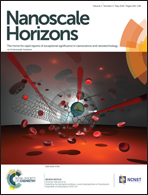Photocatalytic conversion of CO2 over graphene-based composites: current status and future perspective
Abstract
The continuous rise in the atmospheric CO2 level and the ever-increasing demand of energy have raised serious concerns about the ensuing effects on the global climate change and future energy supply. Photocatalytic conversion of CO2, which uses solar light energy to recycle CO2 into fuels and chemicals, provides a promising and straightforward strategy to simultaneously reduce the atmospheric CO2 level and fulfil the future energy demand. However, the lack of substantial development of state-of-the-art materials remains a major bottleneck of this technology. In recent years, graphene-based composite photocatalysts have gained increasing interest in CO2 conversion due to the introduction of graphene with a series of unique physicochemical properties, which has shown to play a significant role in promoting the photocatalytic solar energy conversion efficiency. In this review, we comprehensively summarize the typical literature reports on graphene-based composites for photocatalytic conversion of CO2 to produce solar fuels and chemicals. The main types of the reported graphene-based composites and the role of graphene in the composites in improving the photocatalytic performance have been elaborated. In particular, we have highlighted the possible role of graphene in tuning the product selectivity of photocatalytic reduction of CO2. Finally, perspectives on the existing problems and future research on graphene-based composites toward photocatalytic conversion of CO2 are critically discussed.


 Please wait while we load your content...
Please wait while we load your content...